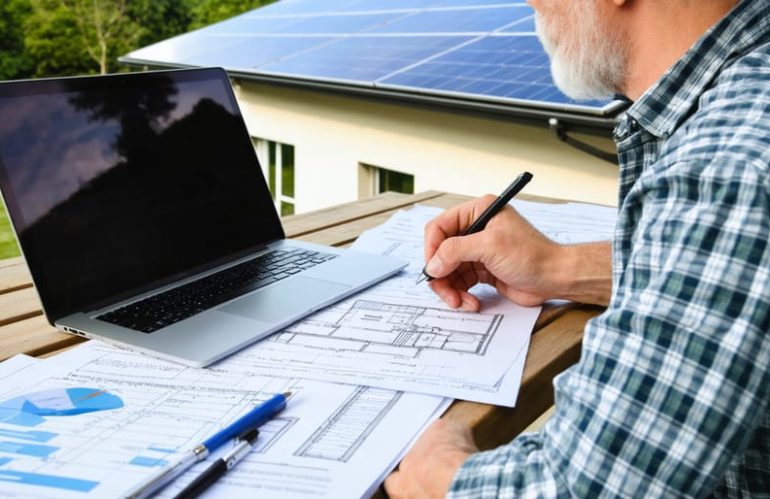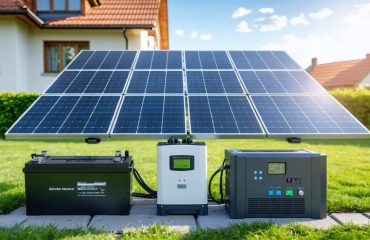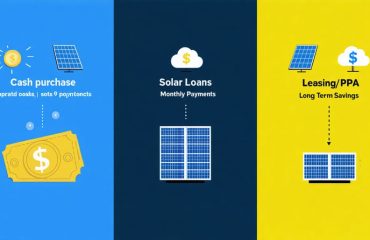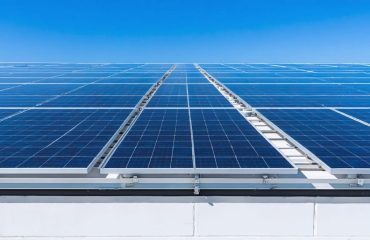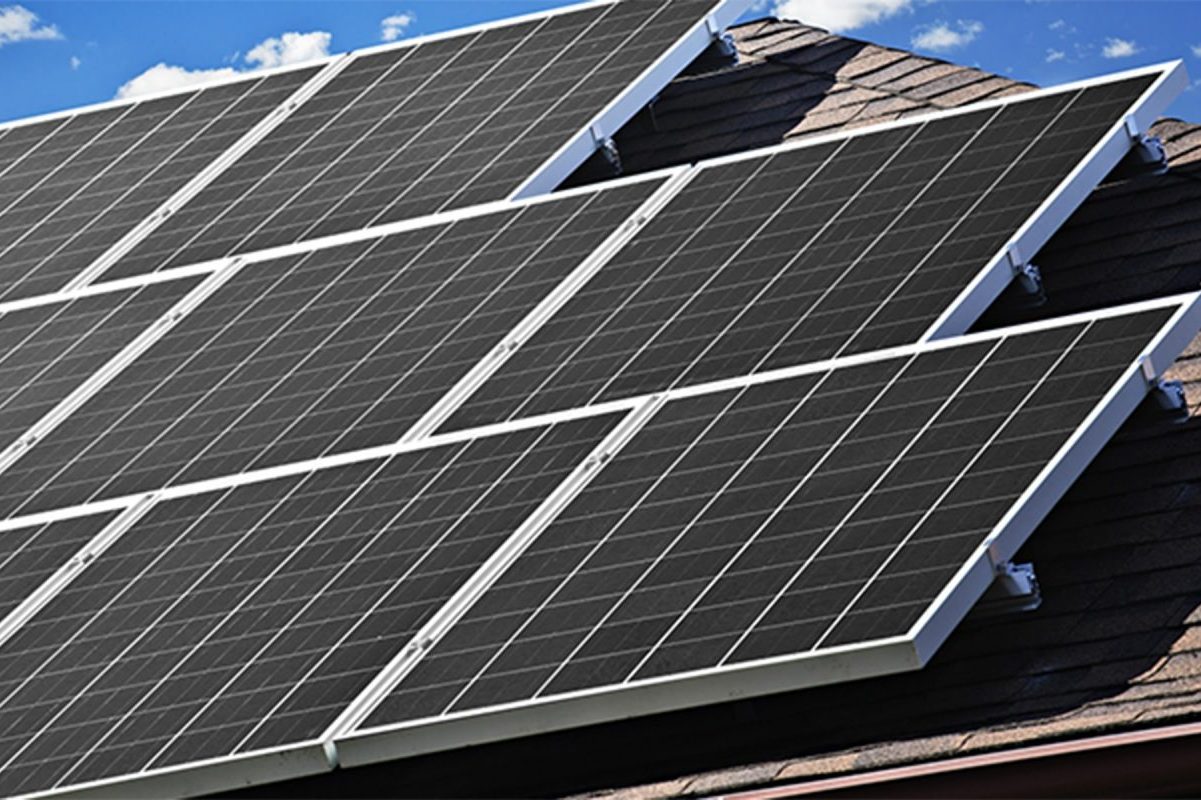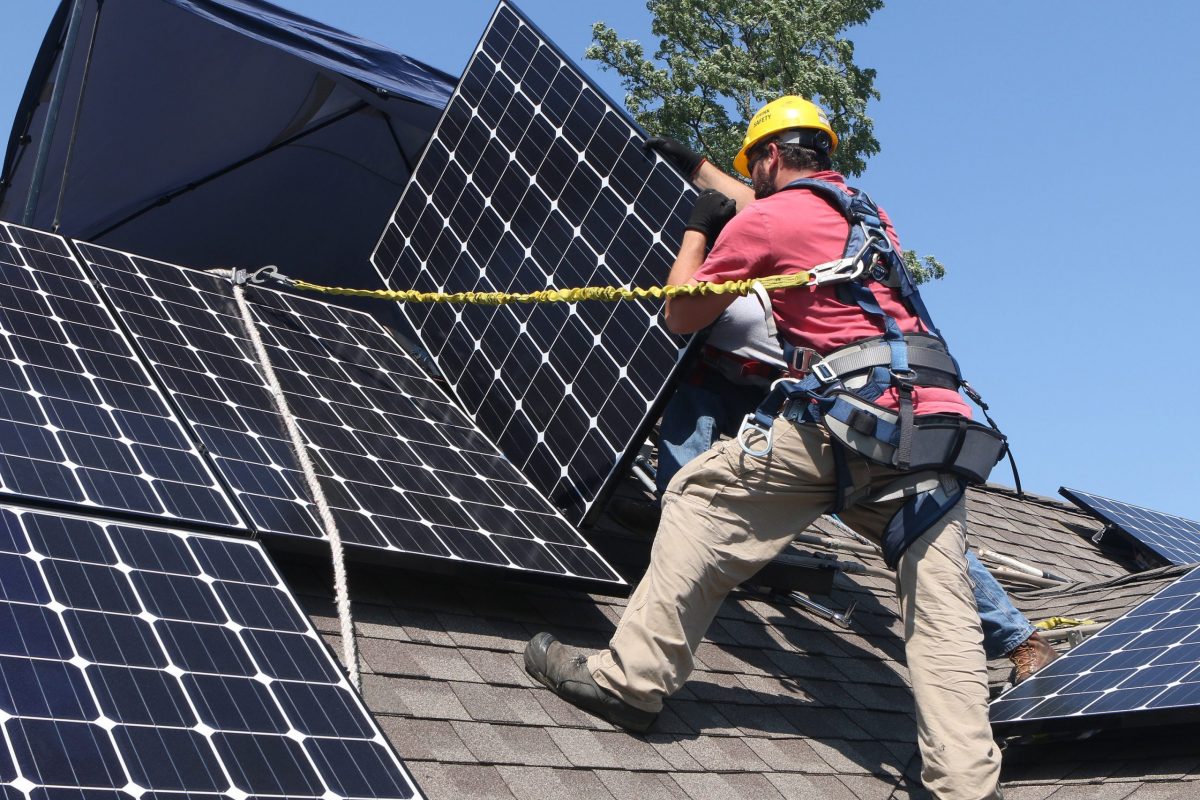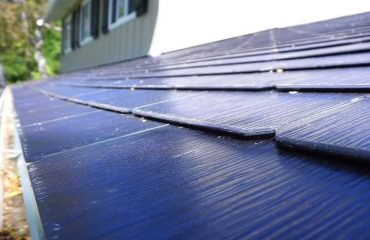Installing your own solar panels can be legal and cost-effective, but navigating the regulations requires careful planning. Most states allow homeowners to install solar panels themselves, provided they obtain proper permits, follow local building codes, and pass required inspections. However, any electrical connections to the power grid must typically be completed by a licensed electrician. Before starting your DIY solar project, connect with DIY solar community resources to understand local requirements, evaluate your skill level, and determine which aspects of installation you can legally handle yourself. Many homeowners successfully manage the mechanical installation while partnering with certified professionals for critical electrical work, creating a balanced approach that maximizes savings while ensuring safety and compliance.
Legal Requirements for DIY Solar Installation
Permits and Local Regulations
Before installing solar panels yourself, you’ll need to obtain the necessary permits from your local government. Most jurisdictions require both building and electrical permits for solar installations. These permits ensure your installation meets safety standards and building codes.
Start by contacting your local building department to understand specific requirements. Many areas have unique regulations regarding solar panel placement, setbacks from property lines, and roof load requirements. Some neighborhoods, especially those with homeowners associations (HOAs), may have additional restrictions about panel visibility and placement.
The permitting process typically involves submitting detailed plans of your installation, including technical specifications and engineering calculations. You’ll also need to schedule inspections before and after installation. While the permit costs vary by location, expect to pay between $200 to $500 for required documentation.
Don’t skip this crucial step – installing solar panels without proper permits can result in fines, mandatory system removal, or complications when selling your home. Many localities also require certification of your installation by a licensed electrician, even if you do the main installation work yourself.
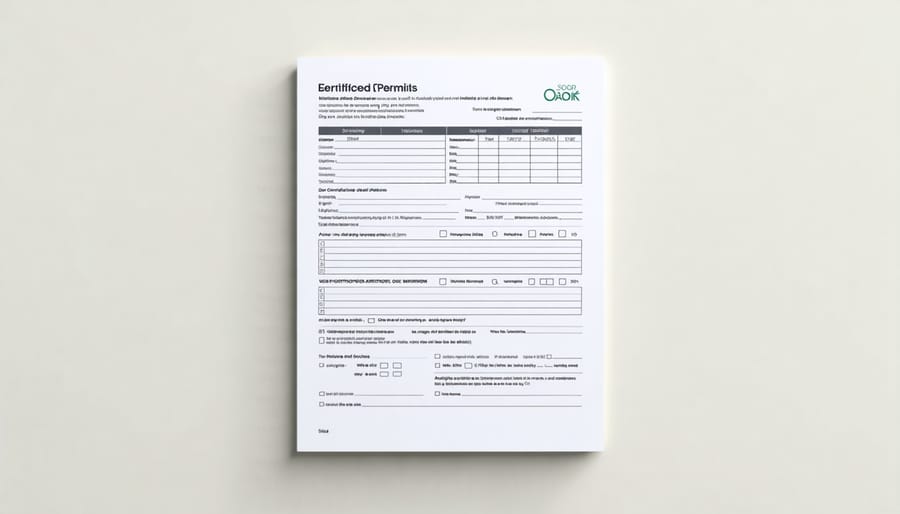
Professional Certification Requirements
While DIY solar installation is possible, certain tasks legally require certified professionals. The electrical connection to your home’s power system must be completed by a licensed electrician to ensure compliance with National Electrical Code (NEC) requirements and local regulations. Additionally, the final grid interconnection must be approved and performed by your utility company.
Most jurisdictions require that a certified structural engineer assess your roof’s capacity to handle the additional weight of solar panels. The main electrical panel upgrades or modifications, if needed, must also be done by licensed professionals.
Some areas mandate that a NABCEP (North American Board of Certified Energy Practitioners) certified professional either performs or oversees the entire installation. However, many regions allow homeowners to handle the physical mounting of panels and basic wiring, provided they obtain proper permits and follow local building codes.
Before starting any DIY solar project, check with your local building department about specific requirements for professional certification in your area. This ensures your installation will be safe, legal, and eligible for available incentives and warranties.
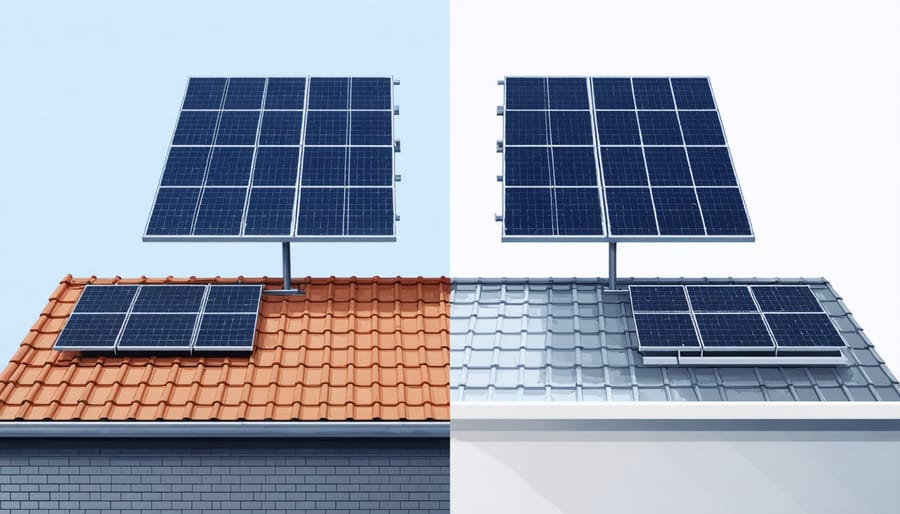
What Homeowners Can Legally Do Themselves
Planning and Design
Before installing solar panels, you’ll need to navigate several legal planning requirements. Start by checking your local zoning laws and building codes, which vary by jurisdiction. Many municipalities require detailed system designs and permit applications before installation can begin.
The first step is creating a comprehensive system design that meets local regulations. This should include roof structural analysis, electrical plans, and equipment specifications. While you can draft initial plans yourself, having them reviewed by a qualified engineer is often legally required. You may want to connect with solar experts who can guide you through this process.
Most jurisdictions require detailed documentation, including:
– Site plans showing panel placement
– Electrical diagrams
– Equipment specifications
– Structural calculations
– Shade analysis reports
Don’t forget to check HOA regulations if applicable – many states have “solar rights laws” that prevent HOAs from blocking installations, but you’ll still need to follow their approval process. Some utility companies also require interconnection agreements before you can legally connect your system to the grid.
Remember to factor in setback requirements, height restrictions, and fire safety codes when planning your installation. While these requirements might seem daunting, they ensure your installation is safe and legally compliant.
Installation Components
While installing solar panels entirely by yourself isn’t recommended, there are several components of the installation process you can handle safely and legally. You can perform initial site assessments, measuring your roof space and analyzing sun exposure patterns. The planning phase, including calculating your energy needs and determining optimal panel placement, can also be a DIY task.
You can legally purchase solar panels, inverters, and mounting hardware directly from manufacturers or suppliers. Additionally, you can install the racking system that will hold your panels, though this requires careful attention to waterproofing and structural integrity. Basic electrical work, such as running conduit and preparing wiring paths, can be done yourself in most jurisdictions.
However, certain critical components must be handled by licensed professionals. The final electrical connections to your home’s power system and grid interconnection must be completed by a certified electrician. Your local utility company must also approve and complete the grid connection. Rooftop mounting that requires structural modifications should be done by qualified contractors to maintain your roof warranty and ensure safety compliance.
Remember to check your local building codes and permit requirements before starting any DIY solar installation work.
Tasks That Require Professional Installation
Electrical Connections
When it comes to electrical connections, most jurisdictions require a licensed electrician to perform the final grid connection of your solar system. While you can legally handle many aspects of solar panel installation yourself, the electrical work typically needs professional installation guidance to ensure safety and code compliance.
Most areas require permits and inspections for electrical work, and your system must meet National Electrical Code (NEC) requirements. This includes proper wiring, grounding, and the installation of appropriate disconnects and safety equipment. Working with high-voltage DC power can be dangerous, and incorrect installations could void your home insurance or create fire hazards.
Some jurisdictions allow homeowners to perform electrical work on their own homes after passing a test or obtaining specific certifications. However, even in these cases, you’ll need to have your work inspected and approved before connecting to the grid. Check with your local building department to understand exactly what electrical work you’re legally permitted to perform yourself.
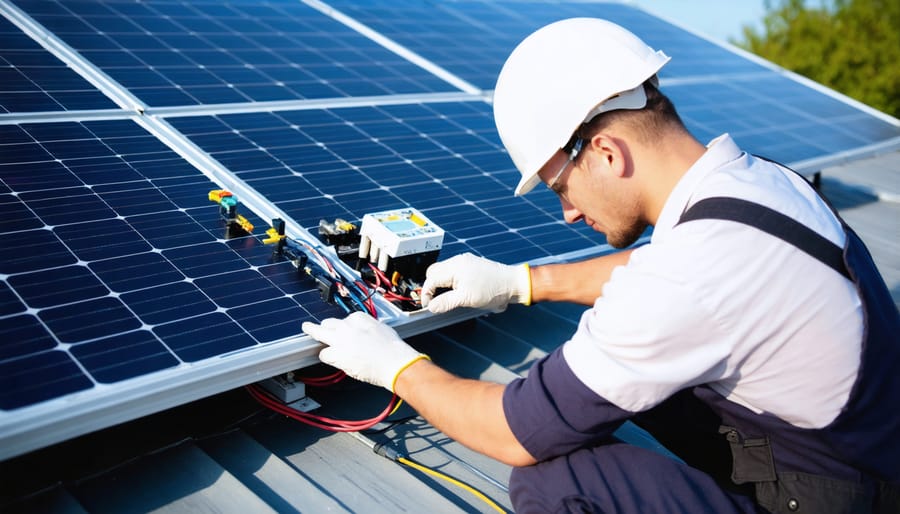
Grid Connection Requirements
Connecting your solar panel system to the power grid requires compliance with specific utility company requirements and local regulations. Most utility companies mandate that a licensed electrician perform the final grid connection to ensure safety and proper installation. You’ll need to submit an interconnection application to your utility provider and obtain their approval before connecting to the grid.
The process typically involves installing a bi-directional meter that tracks both the energy you consume from the grid and the excess power your solar panels feed back into it. This enables net metering, where you receive credits for surplus energy production.
Your system must include safety features like automatic shut-off mechanisms and proper grounding. These requirements protect both utility workers and your home’s electrical system. While you can handle many aspects of solar panel installation yourself, the final grid connection must meet National Electric Code (NEC) standards and local building codes.
Remember to factor in permit requirements and utility company processing times when planning your installation timeline. Many utilities also require periodic system inspections to ensure ongoing compliance with safety standards.
Insurance and Liability Considerations
When installing solar panels yourself, it’s crucial to understand the insurance and liability aspects to protect your investment and yourself. Most homeowner’s insurance policies will cover solar panel systems, but you should contact your insurance provider before installation to confirm coverage and determine if you need additional protection.
Many insurance companies require professional installation for coverage, so if you’re planning a DIY installation, you may need to obtain special insurance or modify your existing policy. Be sure to document your installation process thoroughly, including photographs and detailed records of all components and safety measures implemented.
Liability considerations extend beyond just system damage. You’ll need to ensure your installation meets local building codes and safety standards to protect against potential accidents or injuries. This includes proper structural support for roof-mounted systems and appropriate electrical safety measures to prevent fire hazards.
Consider obtaining additional liability coverage specifically for your solar installation. This can protect you if your DIY installation causes damage to your property or neighboring properties, or if someone is injured due to your system’s installation or operation.
Remember that some manufacturers’ warranties may be void if the panels aren’t installed by certified professionals. Before proceeding with a DIY installation, carefully review warranty requirements and weigh the potential cost savings against the risk of losing warranty coverage.
To minimize liability risks, consider having a licensed electrician inspect your work after completion, especially for the final grid connection. This extra step can provide peace of mind and may be required by your insurance provider or local authorities.
Installing your own solar panels can be a rewarding and cost-effective project when done correctly and legally. As we’ve explored, many areas allow DIY solar installation, provided you follow local regulations, obtain necessary permits, and meet safety standards. The key is thorough preparation and understanding of your local requirements before beginning.
To get started on your solar journey, first check with your local building department about specific regulations and permit requirements. Next, assess your electrical expertise honestly – while many mechanical aspects of installation can be DIY-friendly, complex electrical work often requires a licensed electrician. Consider taking a hybrid approach by handling the mechanical installation yourself while partnering with professionals for critical electrical connections.
Remember to research available tax incentives and rebates, as these can significantly offset your installation costs. Whether you choose to install entirely on your own or work with professionals for certain aspects, ensuring compliance with local codes and safety standards should be your top priority. With proper planning and attention to legal requirements, you can successfully navigate your solar installation project while maximizing both safety and savings.

